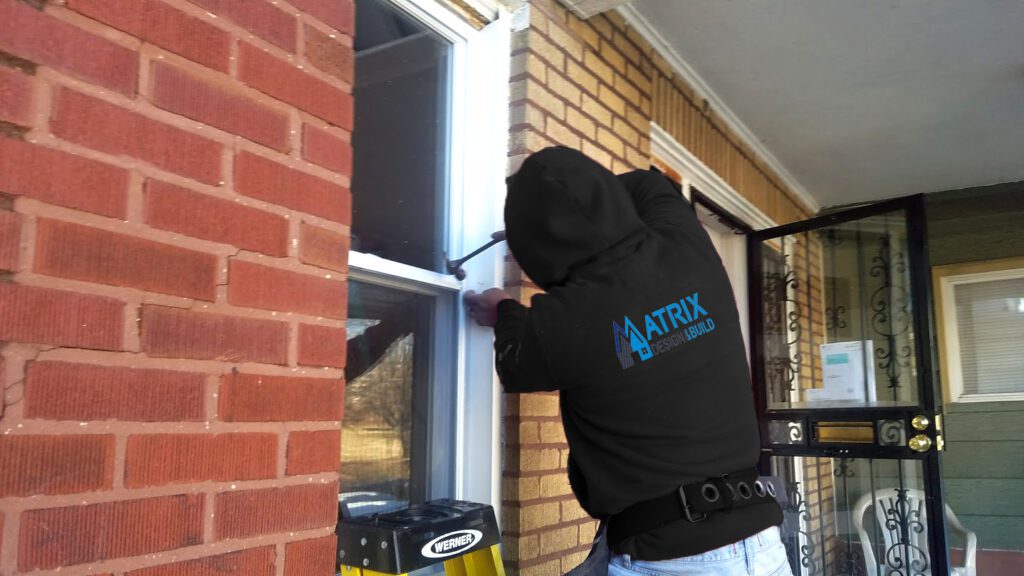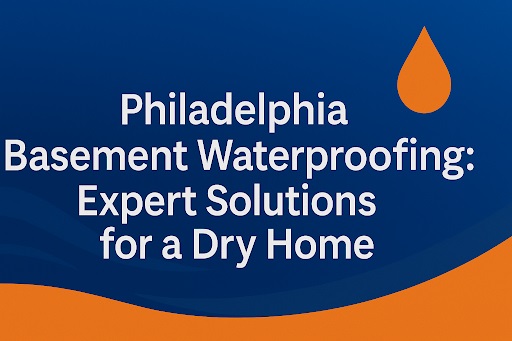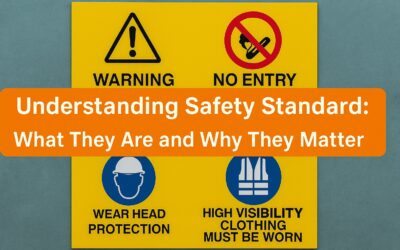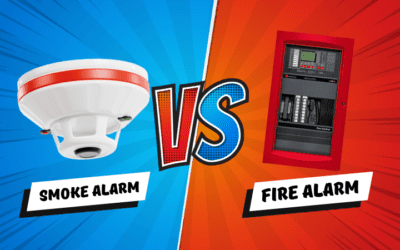Did you know that specific areas of your Philadelphia home require window safety glass?
According to the International Residential Code (IRC), standard glass is prohibited in specific locations due to safety concerns. But what exactly is safety glass, and when is it necessary?
In this article, we’ll explore the concept of safety window glass, its importance, and the situations where it is mandated. Read on to learn more!
What is Safety Window Glass?
Safety window glass refers to glass used in windows specifically designed to reduce the risk of injury in case of breakage. Building codes have rules about this glass, and any glass that follows the requirements of IBC 2406 counts as safety glass.
Typically, this safety glass is made of glass panes, but it can also be made of other materials, such as plastic, special glass blocks, or louvered windows.
There are two main types of safety glass:
- Tempered glass: This type of glass is heat-treated or chemically treated to make it several times stronger than regular glass. When it breaks, it shatters into small, blunt pieces rather than large, sharp shards. Tempered glass is commonly used in shower enclosures, car side windows, and glass tabletops.
- Laminated glass: This type of glass is made by bonding two or more layers of glass together with a plastic interlayer, typically polyvinyl butyral (PVB). The PVB holds the glass together even if it breaks, creating a shatter-resistant shield. Laminated glass is used in windshields, skylights, and other applications with a high impact risk.
Figure 1: The Difference between Regular Glass, Laminated Glass, and Tempered Glass
Benefits of Using Safety Glass
Here are some of the benefits of using safety window glass:
- Reduced risk of injury: Safety glass is less likely to break than regular glass; if it does break, it is less likely to cause serious injuries.
- Improved security: Safety glass can also enhance security by making it more difficult for intruders to break into a building.
- Reduce UV rays: Some safety glass materials, such as laminated glass, can also help block ultraviolet (UV) rays from the sun. UV rays can damage furniture and fabrics and contribute to skin cancer.
When is Safety Glass Required in Philadelphia?
The Philadelphia Building Code aims to keep your home safe. Part of this includes rules around glass in specific locations. According to section 2406.4, there are areas where regular glass can be a hazard because it’s more likely to break and cause injuries. In these areas, the code requires that you use safety glass.
In the following sections, we will explain hazardous locations across seven categories. We will first identify where safety glass is required for each category, followed by any exceptions to these requirements.
Glass in Doors
Regular glass panels in doors can be dangerous. This applies to all the glass parts of swinging, sliding, and bi-fold doors, whether operable or fixed. In these areas, you must use safety glass.
Figure 2: Safety Glass in Doors
Safety glass isn’t required in doors with glass panels:
- When the glass opening is too small for a 3-inch sphere to pass through.
- If the glass in the door is decorative.
- If it is the curved glass panels in revolving doors.
- In the glass doors of commercial refrigerated cabinets.
Glass Adjacent to Doors
Suppose an individual fixed or operable glass panel is next to a door. In that case, it is considered a hazardous location if:
- The closest edge of the glass is within 2 feet (610 mm) of either vertical edge of the closed door.
- The bottom exposed edge of the glass is less than 5 feet (1524 mm) from the walking surface.
Figure 3 illustrates that this rule applies only when both conditions are met simultaneously. For example, suppose a glass panel is within 2 feet of the door’s vertical edge, but the bottom edge of the glass is more than 5 feet above the floor. In that case, it is not considered a hazardous location according to the code, and safety glass is not required.
Figure 3: Safety Glass in Doors and Adjacent to Doors
Here are exceptions to the above rule. In the following situations, when glass exists adjacent to a door, it is not required to be safety glass:
- If the glass is decorative.
- If there’s a wall or permanent barrier between the door and the glass.
- When the door leads to a closet or storage area that is 3 feet (914 mm) or less in depth, the glazing must comply with Section 2406.4.3.
- In single-family homes, two-family homes, or individual units within buildings (referred to as Group R-2 occupancy), safety glass is not required for the glass next to the door as long as the glass is on the latch side and forms a straight corner with the closed door (refer to Figure 4).
Figure 4: Safety Glass Adjacent to Doors
Glass in Windows
Large windows can be a safety hazard and glass in an individual fixed or operable panel must be safety glass if all of these apply:
- The exposed area of an individual pane is greater than 9 square feet (0.84 m2).
- The bottom edge of the glass is less than 1.5 feet (457 mm) from the floor.
- The window’s top edge is more than 3 feet (914 mm) from the floor.
- “One or more walking surface(s) are within 3 feet (914 mm), measured horizontally and in a straight line, of the plane of the glazing”. (IBC 2018, Section 2406.4.3).
If all these conditions happen simultaneously, the window needs to be safety glass.
Exceptions:
- If the glass in the window is decorative.
- Suppose you install a horizontal rail on the accessible side(s) of the glass, and all the following rules apply. In that case, you don’t need safety glazing:
- The bar needs to be between 2.8 and 3.2 feet from the floor.
- The bar must be strong enough to hold a horizontal load of 50 pounds per linear foot (730 N/m). This ensures it can handle someone leaning on it accidentally.
- The bar shouldn’t touch the window itself.
- The bar must be at least 1.5 inches thick in cross-sectional height.
- For the outer layer of glass in multi-pane.or insulating glass windows where the bottom is at least 25 feet (7620 millimeters) above any surface below it (ground, roof, or sloped surface (within 45 degrees of horizontal) (0.79 rad) surface adjacent to the glass exterior.) safety glass is not required.
Figure 5: Safety Glass in Windows
Glass in Guards and Railings
Another area in the code that requires safety glass instead of regular glass is guards and railings. All guard and railing glass, including structural baluster panels and nonstructural in-fill panels, regardless of size or height, must be safety glass.
This means all glass panels used in fences, guardrails, or balconies are considered high-risk areas for safety.
This is because railings and fences are places where people might lean on, bump into, or even fall against the glass. By requiring all railing glass to be extra strong and safe, this rule helps prevent injuries from broken glass.
Glass Around Wet Surfaces
Be careful with glass near wet areas. According to the Philadelphia Building Code, if glass is in walls, enclosures, or fences containing or facing any of the wet areas below, it must be safety glass.
- Hot tubs
- Spas
- Whirlpools
- Saunas
- Steam rooms
- Bathtubs
- Showers
- Indoor or outdoor swimming pools and any other wet areas.
Please note that this rule applies only if the bottom exposed edge of the glass is less than 5 feet vertically (1524 millimeters) from the floor or a walking surface.
This applies to all types of glass, whether single-pane or multi-pane (all panes).
There’s also an exception:
Suppose the glass is farther away than 5 feet horizontally (in a straight line) from the water in a bathtub, hot tub, spa, whirlpool, or swimming pool. In that case, it doesn’t need to be a safety type.
Figure 6: Safety Glass Around Wet Areas
Glass Adjacent to Stairways and Ramps
This rule concerns the safety of glass near stairs and ramps. If the bottom edge of the glass is less than 5 feet (1524 mm) from the walking surface of the stairs or landings, then it needs to be safety glass.
There are a couple of exceptions where the glass doesn’t need to be a safety type:
- If there’s a proper handrail meeting building code (Sections 1015 and 1607.8) and the glass is set back more than 1.5 feet (457 mm) from the railing, then regular glass is okay. The railing helps prevent falls, and the setback gives space to avoid hitting the glass.
- If the glass is farther away than 3 feet (914 mm) horizontally from the edge of the walking surface, it doesn’t need to be extra strong.
Figure 7: Safety Glass Adjacent to Stairways and Ramps
Glass Adjacent to the Bottom Stairway Landing
This rule concerns the windows or glass panels at the bottom of a staircase. It states that if there are windows or glass panels within 5 feet of the landing (measured vertically) and within a 5-foot horizontal arc that is less than 180 degrees (3.14 rad) from the bottom tread nosing, they need to be safety glass. Imagine a danger zone around the bottom step as 5 feet high and 3 feet out in any direction. Windows within that zone need safety glass.
There’s one exception to this rule:
If there’s a proper handrail meeting building code (Sections 1015 and 1607.8) and the glass is set back more than 1.5 feet (457 mm) from the railing, then regular glass is okay.
Figure 8: Safety Glass Adjacent to the Bottom Stairway Landing
Safety Films: An Inexpensive Alternative to Safety Window Glass
Did you know that safety in your Philadelphia home goes beyond just tempered or laminated glass? There’s another option: safety glass films. These films are applied directly to existing windows, making them safer without needing a complete replacement.
Here’s the benefit: these films are easier to install and more affordable than tempered glass. Even better, the building code in Philadelphia uses the term “safety glass,” not specifically “tempered glass.” The building code term means you have some flexibility!
The product you choose must meet one of two safety standards – CPSC 16 CFR 1201 Category II or ANSI Z97.1 Class A. Imagine a test where a 100-pound weight swings at the end of a long pendulum and smashes into the glass. Safety glass must survive this impact by staying together or breaking into tiny pieces that won’t cause serious injury. Tempered glass achieves this by shattering, but safety films can keep regular glass intact during the test.
Figure 9: Window Glass with and without a Security Film
The bottom line is if your renovation project hits a snag because you didn’t use safety glass, for example, in your bathroom, replacing the regular glass with tempered glass isn’t the only solution. Safety films can transform your regular glass into code-compliant safety glass!
A heads-up for film use: While films are a code-approved option, local building officials might not be familiar with them. To avoid any issues, talk to them before choosing a film product. Clear communication is always crucial!
How to Install Safety Films on Windows
Here’s a step-by-step guide on installing safety film on your windows:
- Remove any dirt, dust, or debris from the glass surface. Use a mild soap solution and a squeegee to ensure a spotless and dry surface.
- Carefully measure the width and height of the window frame, adding about 2-3 inches extra to each measurement.
- Lay the film on a clean, flat surface and mark the measurements you obtained. Use a straightedge and a utility knife or film cutter to cut the film precisely to size.
- Mix a few drops of mild dish soap in a spray bottle filled with clean water.
- Carefully peel back a small section of the liner (the clear backing on the film) at the shortest edge.
- Hold the film by the exposed corner (avoid touching the adhesive surface), carefully place it on the clean window with the adhesive side facing the glass, and stick only the small section that you peeled off in step 5.
- Now, gradually peel the liner and lightly mist the exposed adhesive surface of the film with the soap solution. Using the squeegee, begin at the center and gently push outwards in even strokes to remove air bubbles and excess solution, working your way down towards the edges.
- Once the film is squeezed and secured, use the utility knife and straightedge to trim the excess film around the window frame carefully.
- Lightly mist the entire film surface with the soap solution and squeegee again to remove all air bubbles and solution.
- Use a lint-free cloth to remove any excess solution from the edges of the film and the window frame.
Conclusion
By prioritizing safety window glass in your Philadelphia home renovation, you safeguard your loved ones and create a more secure environment. Not only will it give you peace of mind, but it can also ensure a smooth home inspection process.
At Matrix Construction, our team of seasoned professionals is well-versed in identifying all areas in your home that require safety glass. With our expertise, we’ll ensure your renovation project meets all necessary safety codes and inspections and instill in you lasting confidence in your investment.
Contact us today for a FREE consultation. We’re here to help you create a beautiful and safe haven for your family. Your safety is our priority, and we look forward to discussing your project with you.





![Top 20 Reasons for Failing a Plumbing Inspection in Philadelphia [2025 Guide]](https://matrixgc.com/wp-content/uploads/2025/05/Common-issues-causing-failing-a-plumbing-inspection-in-Philadelphia.png)

![Smoke Alarm Installation Requirements in Philadelphia [2025]](https://matrixgc.com/wp-content/uploads/2024/06/smoke-alarm-installation-400x250.png)

0 Comments